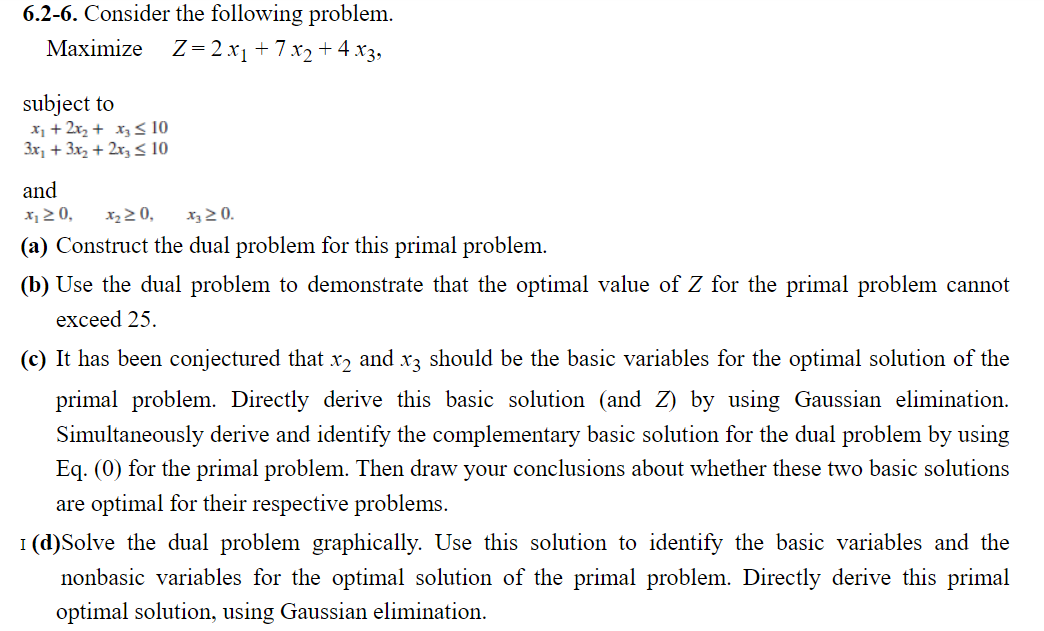6.2-6. Consider the following problem. Maximize Z=2x +7x + 4x3, subject to x + 2x + x 10 3x + 3x + 2x 10

6.2-6. Consider the following problem. Maximize Z=2x +7x + 4x3, subject to x + 2x + x 10 3x + 3x + 2x 10 and x 0, x 0, * 2 0. (a) Construct the dual problem for this primal problem. (b) Use the dual problem to demonstrate that the optimal value of Z for the primal problem cannot exceed 25. (c) It has been conjectured that x and x3 should be the basic variables for the optimal solution of the primal problem. Directly derive this basic solution (and Z) by using Gaussian elimination. Simultaneously derive and identify the complementary basic solution for the dual problem by using Eq. (0) for the primal problem. Then draw your conclusions about whether these two basic solutions are optimal for their respective problems. 1 (d)Solve the dual problem graphically. Use this solution to identify the basic variables and the nonbasic variables for the optimal solution of the primal problem. Directly derive this primal optimal solution, using Gaussian elimination.
Step by Step Solution
3.44 Rating (151 Votes )
There are 3 Steps involved in it
Step: 1
Soluation Then 21342 27 1 212 24 Given 9 37 23 5 The n Then 3 L F...
See step-by-step solutions with expert insights and AI powered tools for academic success
Step: 2

Step: 3

Ace Your Homework with AI
Get the answers you need in no time with our AI-driven, step-by-step assistance
Get Started


